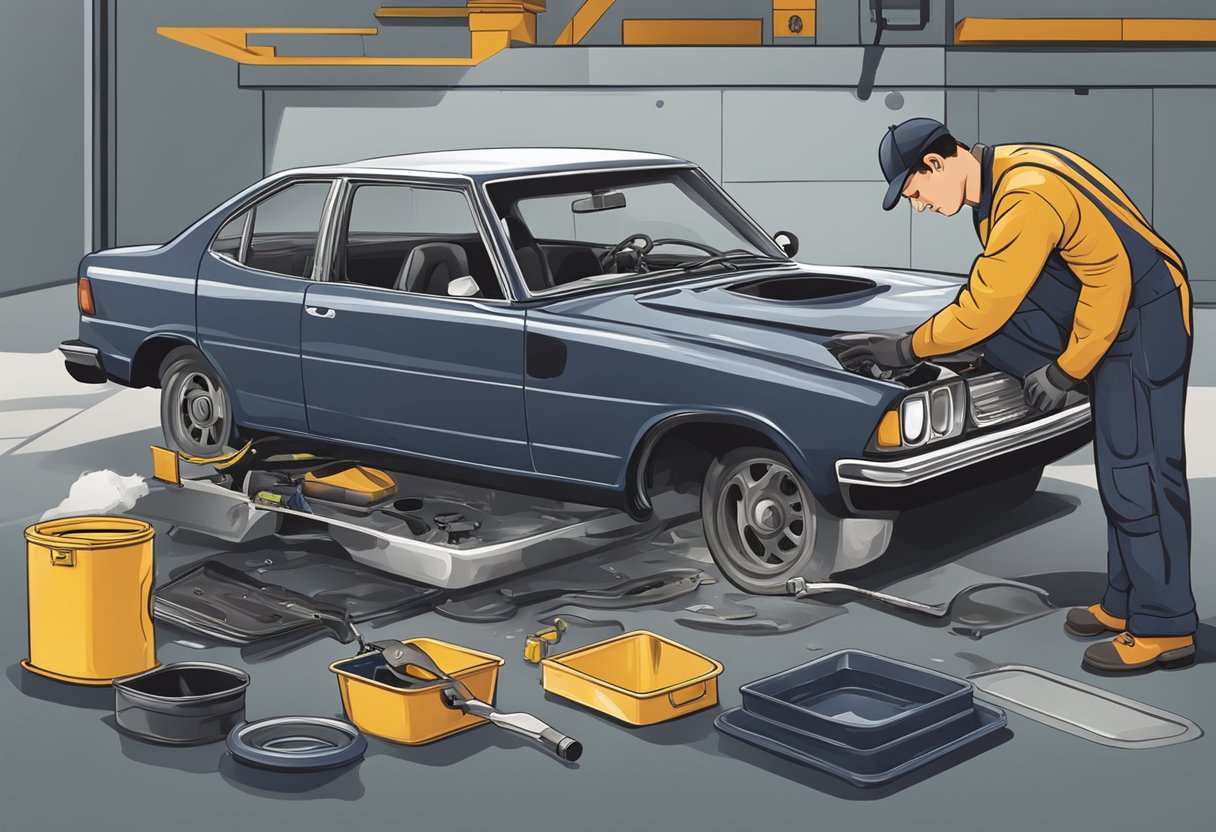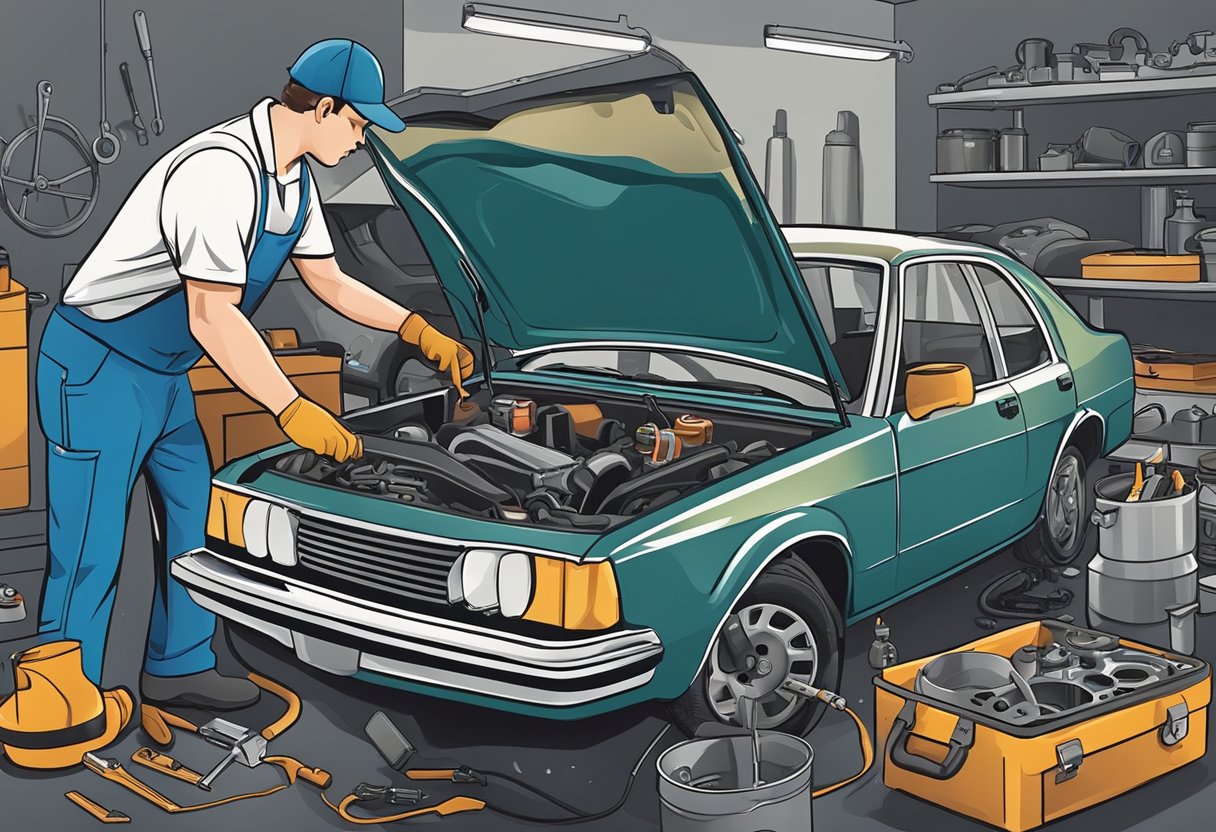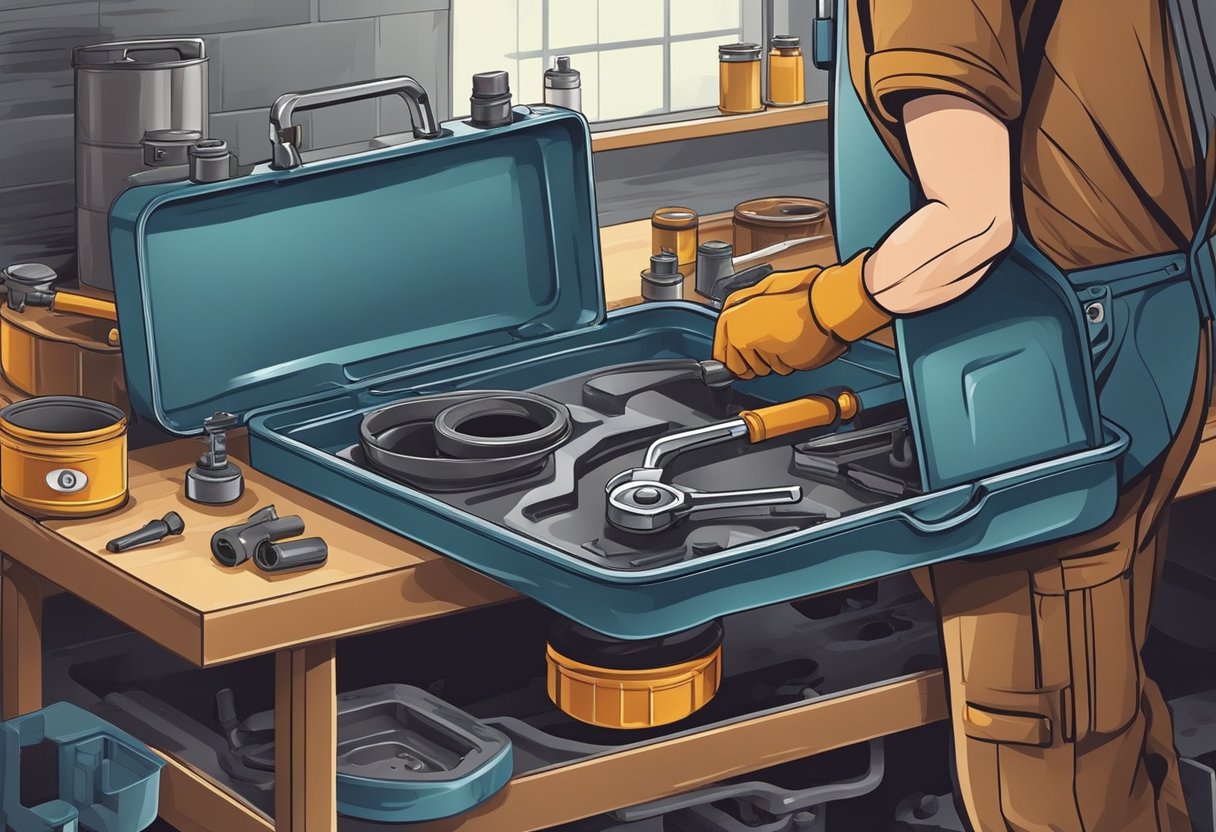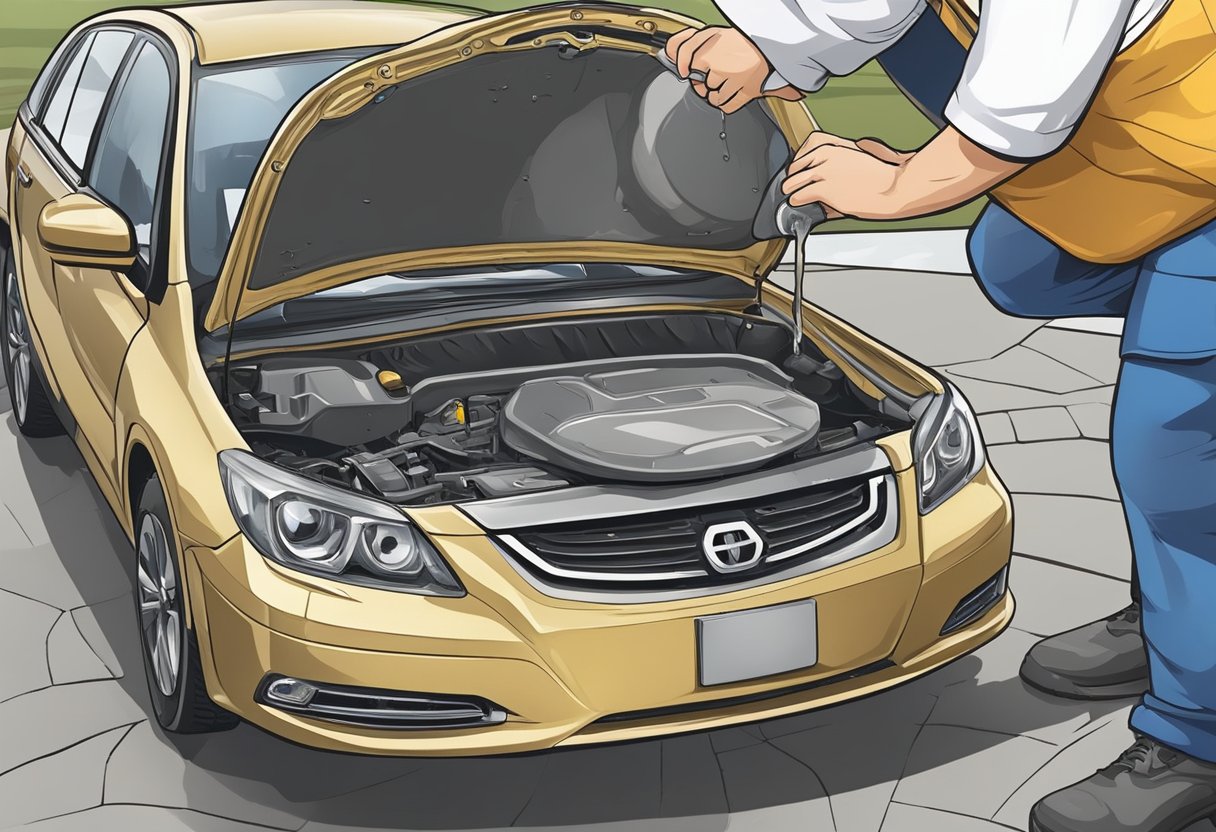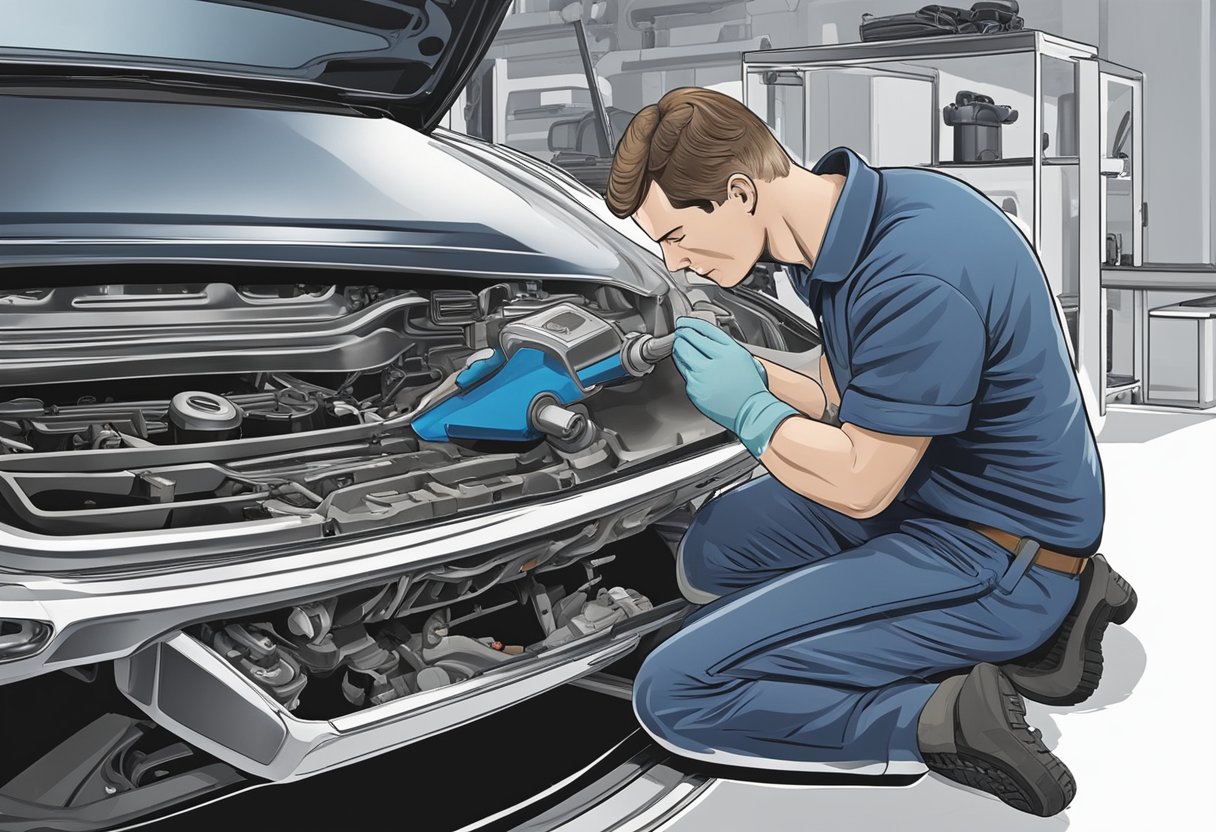Replacing an oil pan is a common repair that many car owners will face at some point.
The oil pan is a vital component of the engine’s lubrication system, and it holds the oil that keeps the engine running smoothly.
Over time, the oil pan can become damaged or corroded, leading to leaks that can cause serious engine damage if left unaddressed.
In this article, we will explore the causes of oil pan damage and the costs associated with replacing it.
One of the most common causes of oil pan damage is hitting a pothole or other road hazard.
The oil pan is located on the bottom of the engine, making it vulnerable to damage from debris on the road.
Another common cause of damage is rust or corrosion, which can develop over time due to exposure to moisture and other environmental factors.
In some cases, the oil pan may simply wear out over time, leading to leaks and other issues.
Understanding the causes of oil pan damage can help you take steps to prevent it from happening in the first place.
When it comes to the cost of replacing an oil pan, there are several factors to consider.
The cost of the part itself can vary depending on the make and model of your vehicle, as well as the type of oil pan you need.
Labor costs can also vary depending on the complexity of the repair and the hourly rate charged by the mechanic.
In some cases, additional repairs may be necessary if the engine has been damaged by oil leaks.
By understanding the costs associated with oil pan replacement, you can make an informed decision about whether to tackle the repair yourself or take your car to a professional mechanic.
Understanding Oil Pan Replacement
If you own a vehicle, you know that it requires regular maintenance and repairs to keep it running smoothly.
One of the common issues that you may encounter is the need for an oil pan replacement.
In this section, we will discuss the purpose of the oil pan and the signs of oil pan failure to help you understand this common repair.
Purpose of the Oil Pan
The oil pan is an essential component of your vehicle’s engine.
It is a metal container that holds the engine oil and is located at the bottom of the engine.
The oil pan is responsible for collecting the oil that lubricates the engine’s moving parts and helps to keep them cool.
The oil pan also has a drain plug that allows you to drain the oil from the engine during an oil change.
Signs of Oil Pan Failure
Like any other component of your vehicle, the oil pan can fail over time.
There are several signs that you may notice if your oil pan is failing. One of the most common signs is an oil leak.
If you notice oil puddles under your vehicle or a burning oil smell, it may indicate that your oil pan is leaking.
Another sign of oil pan failure is a knocking or ticking noise coming from the engine.
This noise is caused by low oil pressure, which can occur when the oil pan is damaged or cracked.
If you notice any of these signs, it is essential to have your vehicle inspected by a qualified mechanic.
Ignoring oil pan issues can lead to significant engine damage and costly repairs.
The cost of an oil pan replacement can vary depending on the make and model of your vehicle and the extent of the damage.
However, it is a relatively affordable repair compared to other engine repairs.
In conclusion, understanding the purpose of the oil pan and the signs of oil pan failure can help you stay on top of your vehicle’s maintenance needs.
Regularly checking your oil levels and having your vehicle inspected by a qualified mechanic can help prevent oil pan issues and keep your engine running smoothly.
Cost Factors for Oil Pan Replacement
When it comes to replacing your oil pan, there are various factors that can affect the overall cost.
Below are the three main cost factors to consider:
Parts
The cost of the parts needed for an oil pan replacement can vary greatly depending on the make and model of your vehicle.
Generally, the more expensive the vehicle, the higher the cost of the parts.
Additionally, if your vehicle requires a specialized or rare oil pan, the cost can increase significantly.
Labor
Labor costs for oil pan replacement can also vary depending on the complexity of the job.
If the oil pan is easily accessible and can be removed quickly, the labor cost will be lower.
However, if the oil pan is difficult to access or requires the removal of other components, the labor cost will be higher.
Additionally, the experience and expertise of the mechanic can also affect the labor cost.
Vehicle Make and Model
The make and model of your vehicle can also affect the cost of oil pan replacement.
Luxury or high-performance vehicles often have more complex engine designs, which can make the oil pan replacement process more difficult and time-consuming.
This can result in a higher overall cost.
Overall, the cost of oil pan replacement can range from a few hundred dollars to over a thousand dollars.
To get an accurate estimate of the cost for your specific vehicle, it is best to consult with a trusted mechanic.
Procedure for Replacing an Oil Pan
Replacing an oil pan can be a complex and time-consuming process.
However, with proper preparation and knowledge of the removal and installation process, it can be a relatively straightforward task.
In this section, we will outline the procedure for replacing an oil pan, including the preparation, removal process, and installation and sealing.
Preparation
Before replacing the oil pan, you will need to gather the necessary tools and materials.
This may include a new oil pan, gasket, oil filter, oil, drain pan, socket set, torque wrench, and sealant.
It is important to ensure that you have the correct replacement parts for your specific vehicle make and model.
Next, you will need to drain the oil from the engine by removing the drain plug located on the oil pan.
It is recommended to warm up the engine before draining the oil to ensure that it flows easily.
Once the oil has been drained, you can remove the oil filter and discard it.
Removal Process
To remove the oil pan, you will first need to disconnect any hoses or lines that are connected to it.
This may include the oil level sensor, oil cooler lines, and any other hoses or lines that are in the way.
Once these have been disconnected, you can begin to remove the bolts that hold the oil pan in place.
It is important to note that some oil pans may be difficult to remove due to their location or the presence of other components.
In these cases, it may be necessary to remove other parts or components to gain access to the oil pan.
Installation and Sealing
Once the old oil pan has been removed, you can begin to install the new one.
First, clean the mating surface of the engine block to ensure a proper seal.
Next, apply a thin layer of sealant to the new gasket and place it on the new oil pan.
Carefully place the new oil pan onto the engine block and install the bolts.
It is important to torque the bolts to the manufacturer’s specifications to ensure a proper seal.
Once the oil pan is securely in place, you can reconnect any hoses or lines that were disconnected during the removal process.
Finally, you can fill the engine with the recommended amount of oil and install a new oil filter.
Start the engine and check for any leaks or abnormalities.
In conclusion, replacing an oil pan can be a challenging task, but with proper preparation and knowledge of the removal and installation process, it can be done successfully.
By following the steps outlined in this section, you can ensure a proper and long-lasting repair.
What are the common causes and costs of oil pan replacement?
Common causes of oil pan replacement include rust and corrosion, impact damage, and gasket failure. The cost can range from $300 to $500 for the part, plus labor expenses. Keep an eye out for cam phaser failure symptoms, as this issue can also lead to oil pan damage.
Common Causes of Oil Pan Damage
If you are experiencing oil leaks or other problems with your engine, it may be due to damage to your oil pan.
Understanding the common causes of oil pan damage can help you prevent problems and save money on repairs.
Impact Damage
One of the most common causes of oil pan damage is impact damage.
This can occur when you hit a curb, speed bump, or other obstacle in the road.
The impact can cause the oil pan to crack or dent, which can lead to oil leaks and other problems.
To prevent impact damage, be sure to drive carefully and avoid hitting obstacles in the road.
If you do hit something, be sure to have your oil pan inspected for damage.
Corrosion and Wear
Another common cause of oil pan damage is corrosion and wear.
Over time, exposure to heat, oil, and other factors can cause the oil pan to corrode and wear down.
This can lead to cracks, leaks, and other problems.
To prevent corrosion and wear, be sure to change your oil regularly and use high-quality oil.
You should also have your oil pan inspected regularly for signs of wear and damage.
Gasket Failure
Gasket failure is another common cause of oil pan damage.
Over time, the gasket that seals the oil pan to the engine can wear down or become damaged, which can lead to oil leaks and other problems.
To prevent gasket failure, be sure to have your oil pan gasket inspected regularly and replaced as needed.
You should also avoid over-tightening the bolts that hold the oil pan in place, as this can cause damage to the gasket and other components.
Preventative Measures and Maintenance
To prevent the need for oil pan replacement, it is important to follow proper maintenance procedures for your vehicle.
Regular oil changes and inspections can help identify potential issues before they become major problems.
Here are some preventative measures and maintenance tips to keep in mind:
- Follow the manufacturer’s recommended oil change schedule.
This can vary depending on the make and model of your vehicle, so be sure to check your owner’s manual.
- Check your oil level regularly. Low oil levels can cause damage to the engine and lead to oil leaks.
- Inspect the oil pan for damage or signs of wear. If you notice any cracks or dents, it may be time to replace the oil pan.
- Use high-quality oil and filters. Cheap or low-quality products can lead to buildup and clogs in the oil system.
- Avoid driving on rough roads or over potholes. This can cause damage to the oil pan and increase the risk of leaks.
By following these preventative measures and performing regular maintenance, you can help extend the life of your oil pan and avoid costly repairs.
As an Amazon Associate we earn from qualifying purchases.








